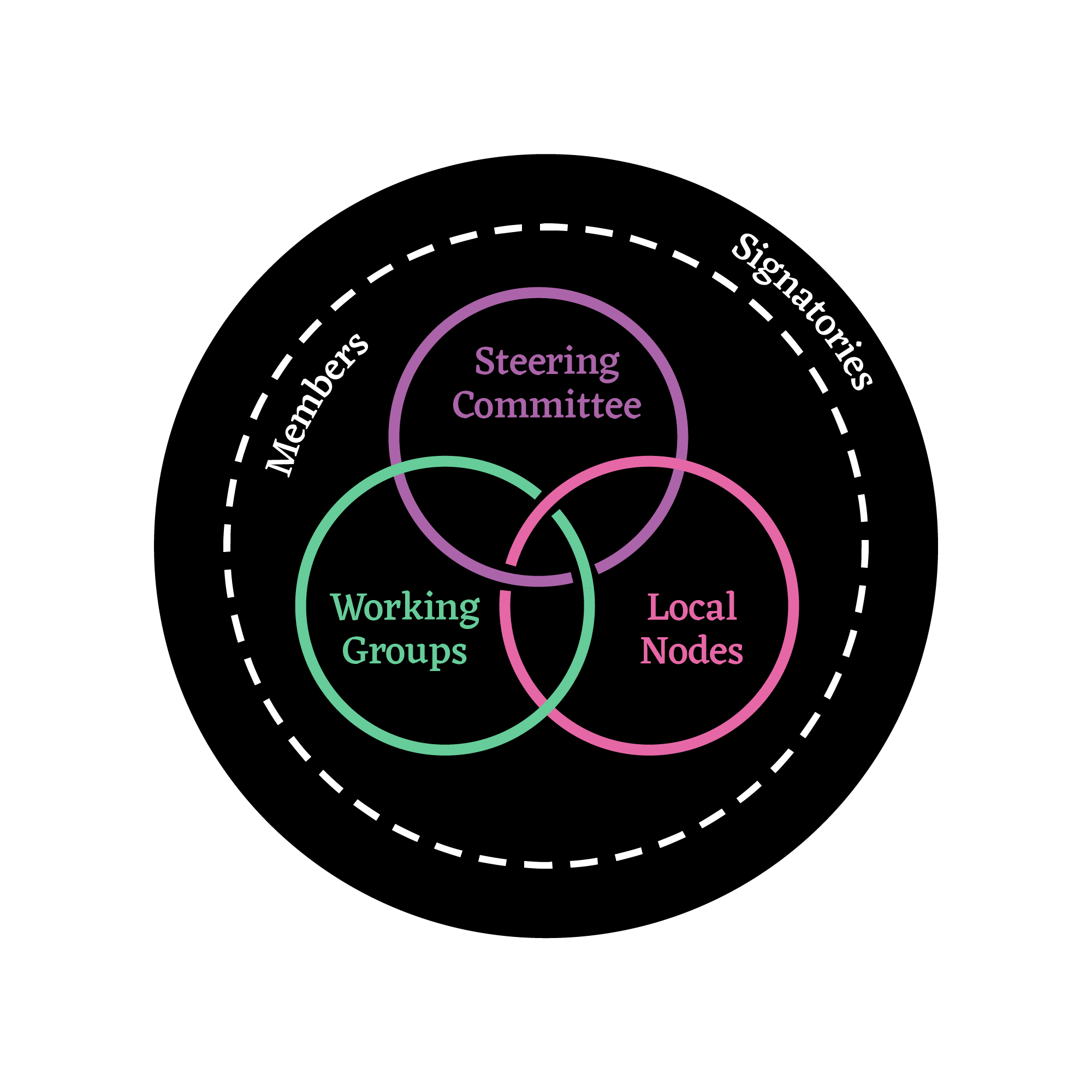Our Structure
The Design Justice Network’s base is our signatories. Signatories can engage more deeply within the network by becoming members, serving on the Steering Committee, volunteering in/facilitating a Working Group, and/or organizing a Local Node.
Graphic description: An illustration of the structure of the Design Justice Network. There is a Venn Diagram with three overlapping circles, which are labelled “Steering Committee, Working Groups, and Local Nodes.” The three circles sit in the middle of another circle labelled “Members,” which is bordered by a dotted line. Everything sits with a final larger circle labelled “Signatories.”
Our Decision-Making Process
Throughout the DJN, we use informal consensus when possible.
If we get stuck, we start by revisiting the Design Justice Network Principles and try again for informal consensus.
If we're still stuck, then we switch to formal consensus process.
As the network grows, our Steering Committee will revisit our shared decision-making process as needed. We are also inspired by the AORTA Cooperative's guide to anti-oppressive facilitation for democratic process.
As we’ve grown from a small circle into a larger over 500-member based organization, we have adopted Community Agreements from the Allied Media Conference: https://amc.alliedmedia.org/how-to-virtual-amc/community-agreements. In the future, we would like to revise these to make them specific to DJN.
Seasonal Pauses
Seasonal Pauses invite members of the Design Justice Network to rest as an intentional practice. They were first proposed by Denise Shanté during her time as a Steering Committee member, and further developed during her time as our Network’s Care Pod lead, where she and Care Pod collaborators Jody Chan and Corina Fadel curated care and healing justice experiences together. Most Seasonal Pauses are one week; the pause scheduled during the transition from December to January is longer, between two to three weeks.
Members of the Network’s Steering Committee and contractors who support different programming or operations of DJN may practice rest by slowing down or stopping their responses to DJN-specific emails, engagement with DJN’s social media accounts, or work on specific projects, when necessary. Explore the history of Seasonal Pauses for our Network through announcements and updates archived on our News page.
Local Nodes
Steering Committee
Communication Tools

